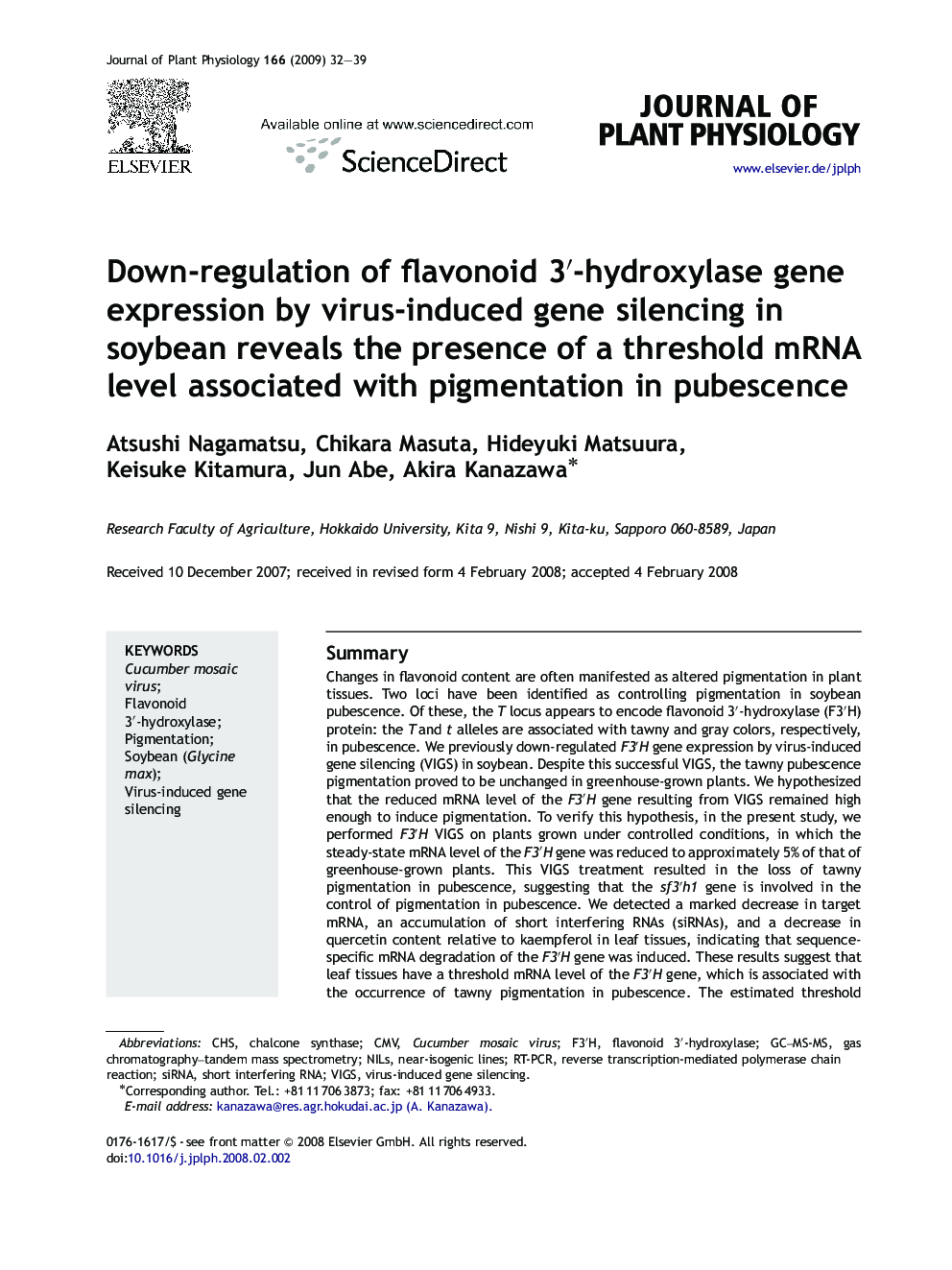| Article ID | Journal | Published Year | Pages | File Type |
|---|---|---|---|---|
| 2057380 | Journal of Plant Physiology | 2009 | 8 Pages |
SummaryChanges in flavonoid content are often manifested as altered pigmentation in plant tissues. Two loci have been identified as controlling pigmentation in soybean pubescence. Of these, the T locus appears to encode flavonoid 3′-hydroxylase (F3′H) protein: the T and t alleles are associated with tawny and gray colors, respectively, in pubescence. We previously down-regulated F3′H gene expression by virus-induced gene silencing (VIGS) in soybean. Despite this successful VIGS, the tawny pubescence pigmentation proved to be unchanged in greenhouse-grown plants. We hypothesized that the reduced mRNA level of the F3′H gene resulting from VIGS remained high enough to induce pigmentation. To verify this hypothesis, in the present study, we performed F3′H VIGS on plants grown under controlled conditions, in which the steady-state mRNA level of the F3′H gene was reduced to approximately 5% of that of greenhouse-grown plants. This VIGS treatment resulted in the loss of tawny pigmentation in pubescence, suggesting that the sf3′h1 gene is involved in the control of pigmentation in pubescence. We detected a marked decrease in target mRNA, an accumulation of short interfering RNAs (siRNAs), and a decrease in quercetin content relative to kaempferol in leaf tissues, indicating that sequence-specific mRNA degradation of the F3′H gene was induced. These results suggest that leaf tissues have a threshold mRNA level of the F3′H gene, which is associated with the occurrence of tawny pigmentation in pubescence. The estimated threshold mRNA level for pigmentation in pubescence was approximately 3% of the steady-state mRNA level of the F3′H gene in greenhouse-grown plants.
